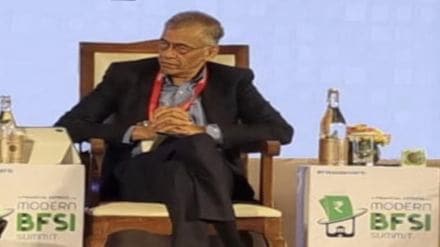At a time when the world is grappling with many flailing economies, Prime Minister Narendra Modi’s visit to the United States is expected to let the two countries edge closer with ripple effects in terms of mutual benefits. For India, political analysts perceive this as a unique opportunity to leverage its new role in the geo-political landscape.
Equally important, showcase the India story in the crucial banking and financial services arena. For not only have Indian banks, thus far, displayed an ability to weather financial shocks but are now also among the most profitable with tight regulations.
This, stands out especially when panic buttons are being pressed globally and the US witnessing a couple of bank collapses. Add to this, there has been the girth and depth now achieved in the digital journey in financial services, an aspect well recognised globally and by institutions like the International Monetary Fund (IMF). However, what seems to have gone unnoticed is what, TVS Capital founder Gopal Srinivasan, calls India’s democratisation of innovation.
Speaking at the just concluded FE Modern BFSI Summit 2023, Srinivasan says, “innovation in India has got democratised.” To him, this appears so because innovation is not just confined to startups or private sector but even regulators, government and public institutions are active participants in unleashing the power of innovative interventions. He gives examples of India’s UPI (Unified Payments Interface), OCEN (Open Credit Enablement Network) and tomorrow’s success with NFIR (National Financial Information Registry). Seeing a pattern and all participants active on innovation, he points to happenings that range from the State Bank of India being in a position to open 23,000 accounts everyday to an HDFC deploying generative AI. Or when “the Reserve Bank of India (RBI) and its governor passionately involved in hoping that the NFIR be passed in the monsoon session of the parliament of when he says India will take PCR (Public Credit Registry), something that every country has spoken about, and make it happen, the net impact could be huge.”
That these can be game changing are to him apparent from the needs that these can address. “The most obvious thing we miss about India is the most obvious thing that we know about India and that is scale,” he says. Quoting numbers from some studies, he says, there are going to be 55 million new middle class people earning 5 lakh income per year by 2030. On innovation, the traditional argument has been around what will happen to the incumbent from the challenger but in the Indian context the incumbent has itself become the challenger.
On generative AI, Srinivasan feels, the discussion needs to move beyond what it can do to improve efficiency and productivity and instead, in the finance world, see what it can do by making credit underwriting more intelligent, ensure better customer experience and play a fruitful role in cybersecurity by facilitating an ability to predict events before they occur.
